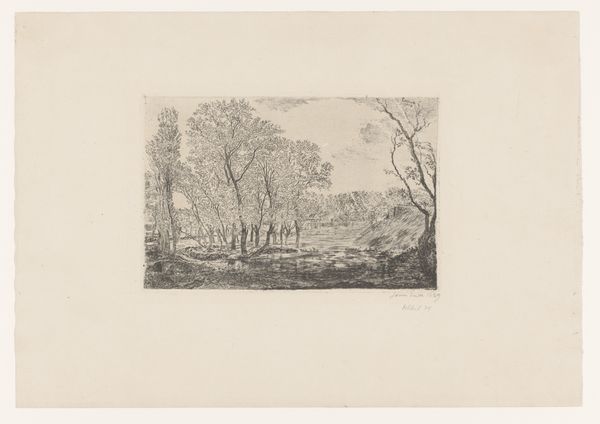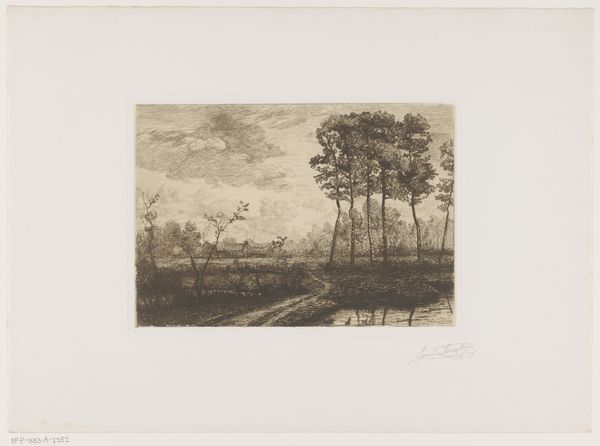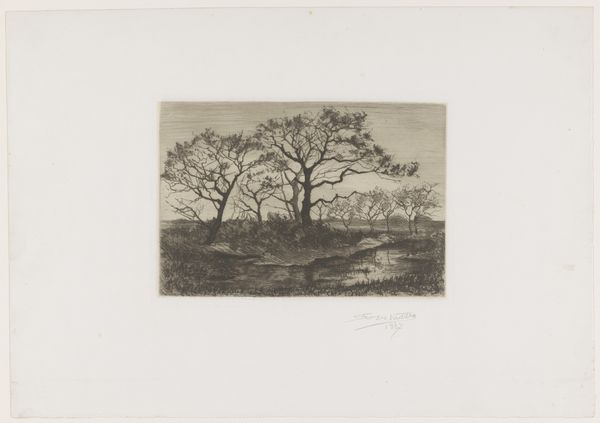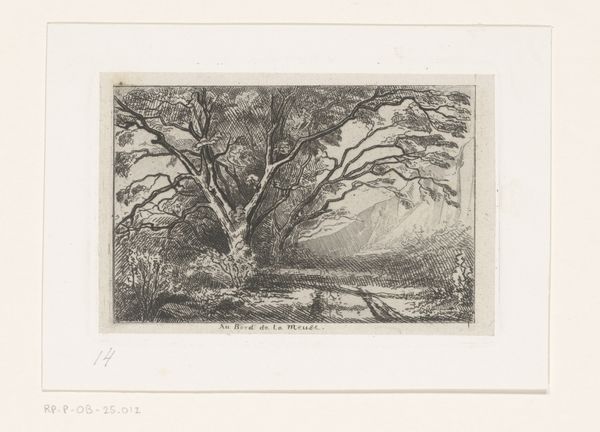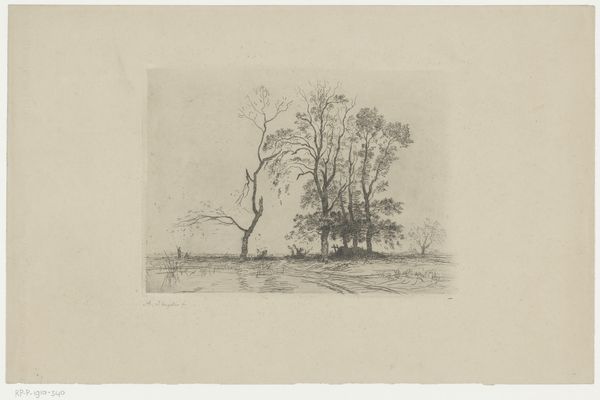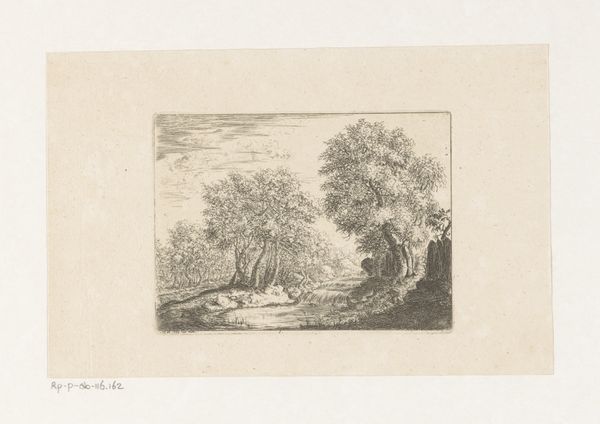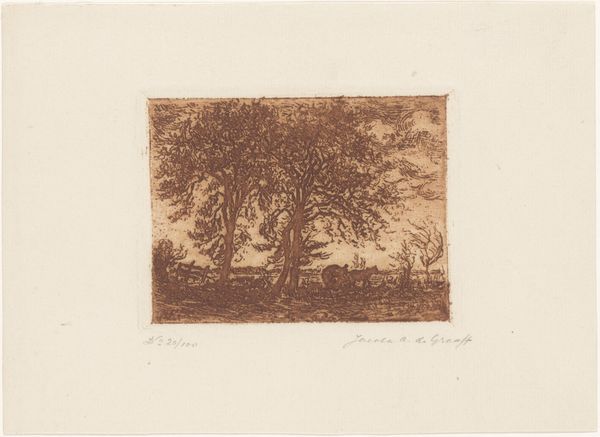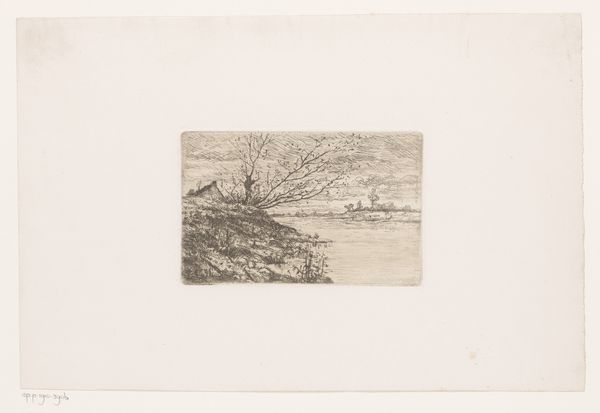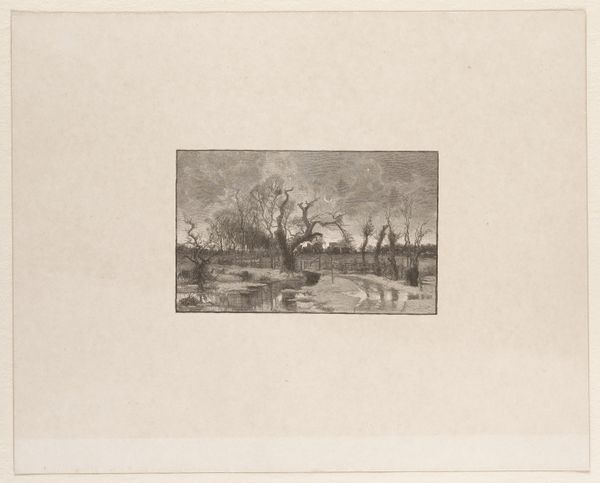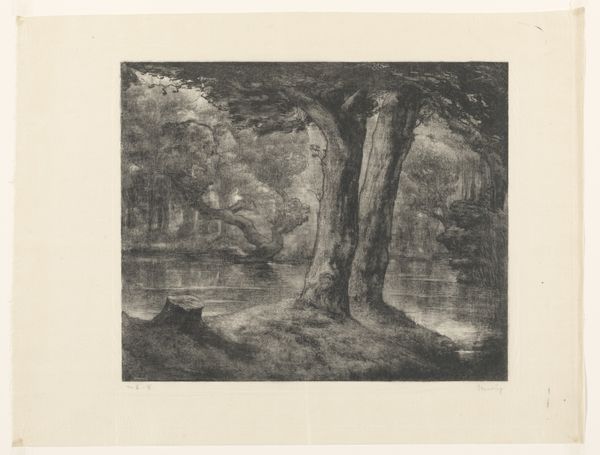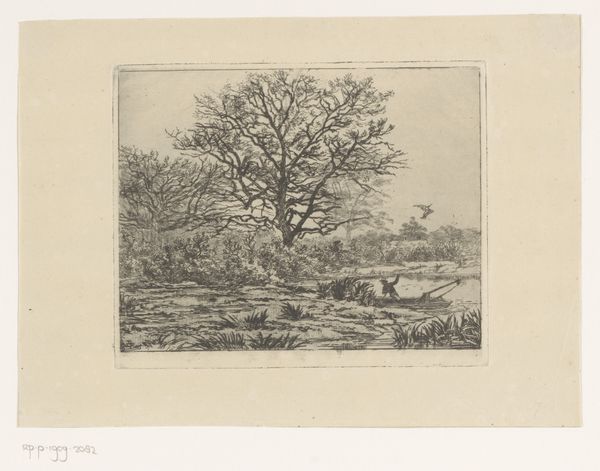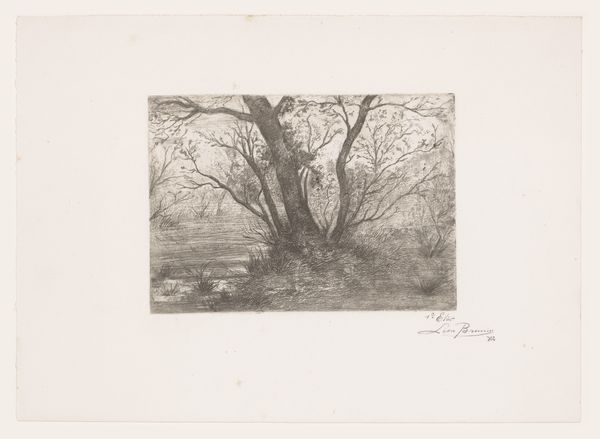
drawing, print, etching
#
drawing
#
toned paper
# print
#
etching
#
landscape
Dimensions: height 232 mm, width 315 mm
Copyright: Rijks Museum: Open Domain
Editor: So, this is “Knotwilgen rondom een plas,” or "Pollard Willows around a Pond", made between 1848 and 1909 by Armand Collard. It’s an etching, a kind of print. The scene is really still and somber...almost like a memory. What catches your eye when you look at it? Curator: The knot willows themselves. The repeated image of pollard willows creates a very particular rhythm in the landscape. These aren't just trees; the pollarding – that severe pruning – speaks of a very human intervention, a cyclical relationship between humans and nature. Editor: Cyclical how? Curator: Well, pollarding extends the life of the tree while providing a continuous source of wood. This co-dependence is visually expressed in the knot willows. Consider their shapes: like hands reaching, or perhaps gnarled figures huddled together, their bare branches weaving stories of winters past, the plas reflecting this interplay back onto itself, water acting as both mirror and metaphor for nature's cycles. Do you get a sense of resilience from these shapes, or perhaps something else? Editor: I can see that, this kind of enduring spirit in the landscape. But it's also melancholy, maybe because they’re bare, or the muted tones of the etching. Curator: Etching emphasizes line and form, removing the vibrancy of color in favor of structure. It encourages us to see the essential shapes and shadows, to appreciate the bones of the landscape, which carries meaning in and of itself. Look at the placement of the trees - what might their placement signify to you? Editor: Perhaps the artist is using the repetition of the pollard willows and muted shades to connect nature and human intervention. Curator: Precisely. The knot willows, though manipulated, still stand as sentinels, reminding us of time, adaptation, and the interwoven stories of humans and nature. It’s a visual record of that ancient dialogue, a testament to cultural endurance rendered through simple lines. Editor: I'll definitely remember to look for these kinds of connections - the symbols of interaction and persistence – in other landscapes too. Thank you for the lesson!
Comments
No comments
Be the first to comment and join the conversation on the ultimate creative platform.
